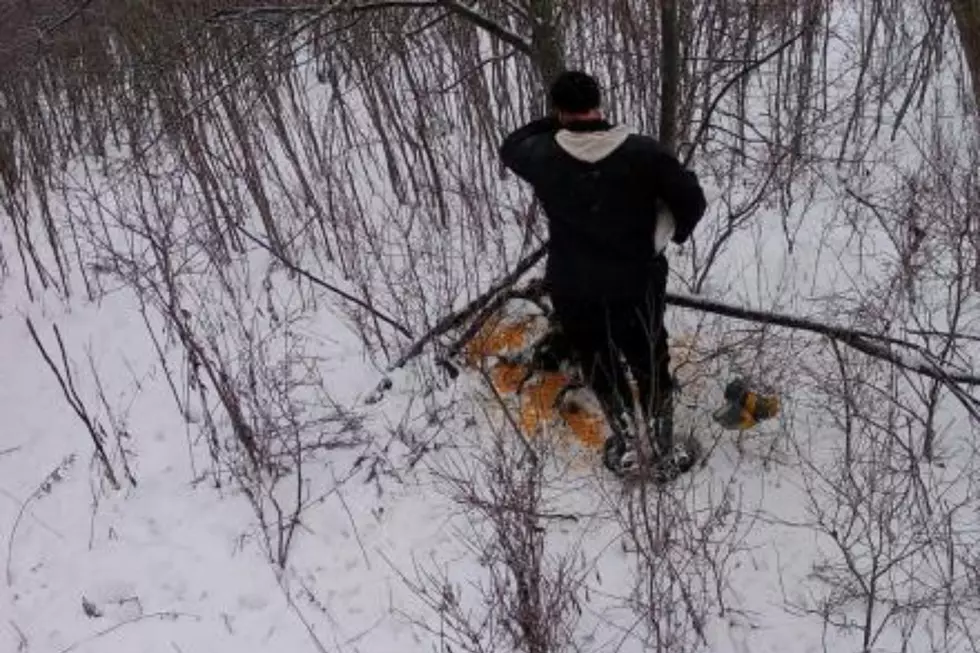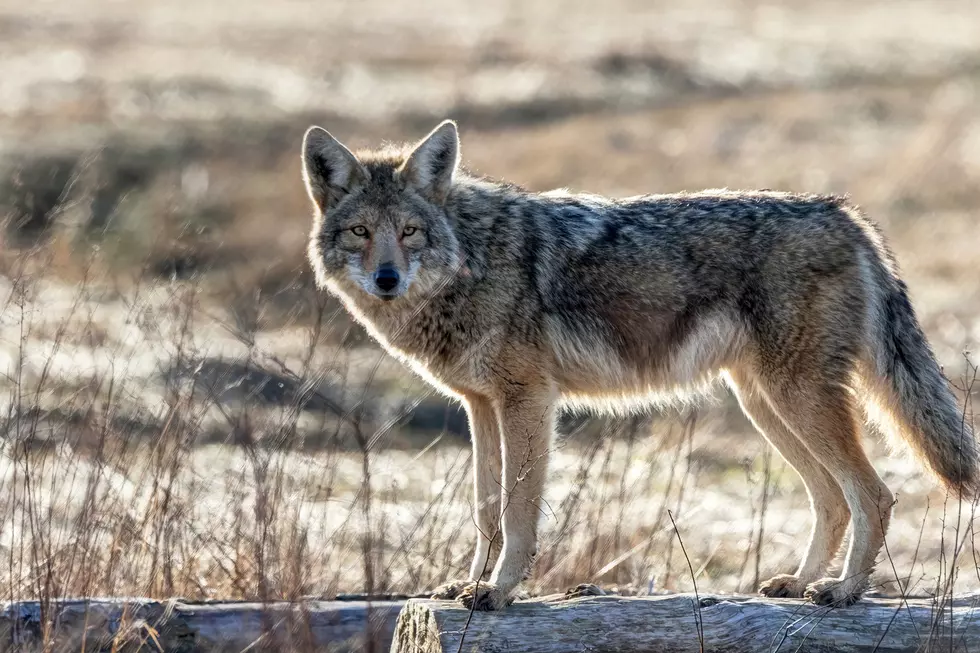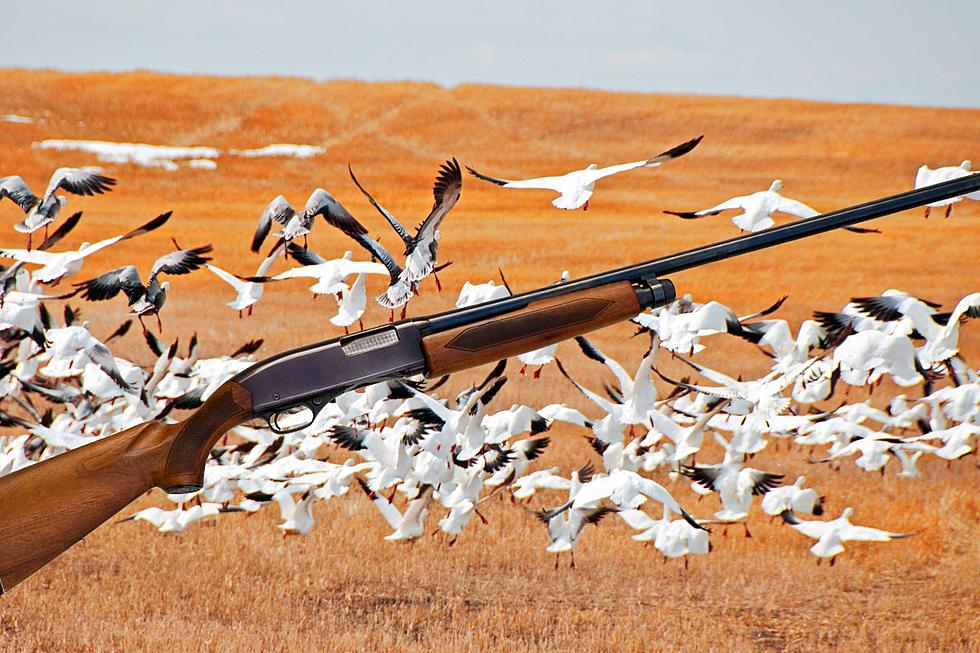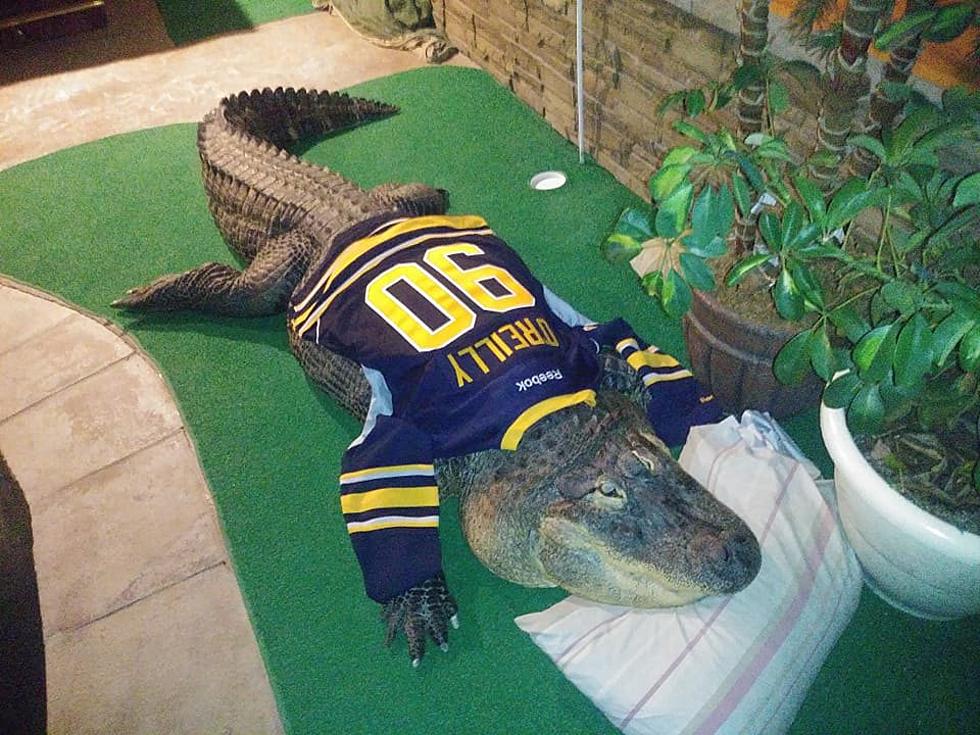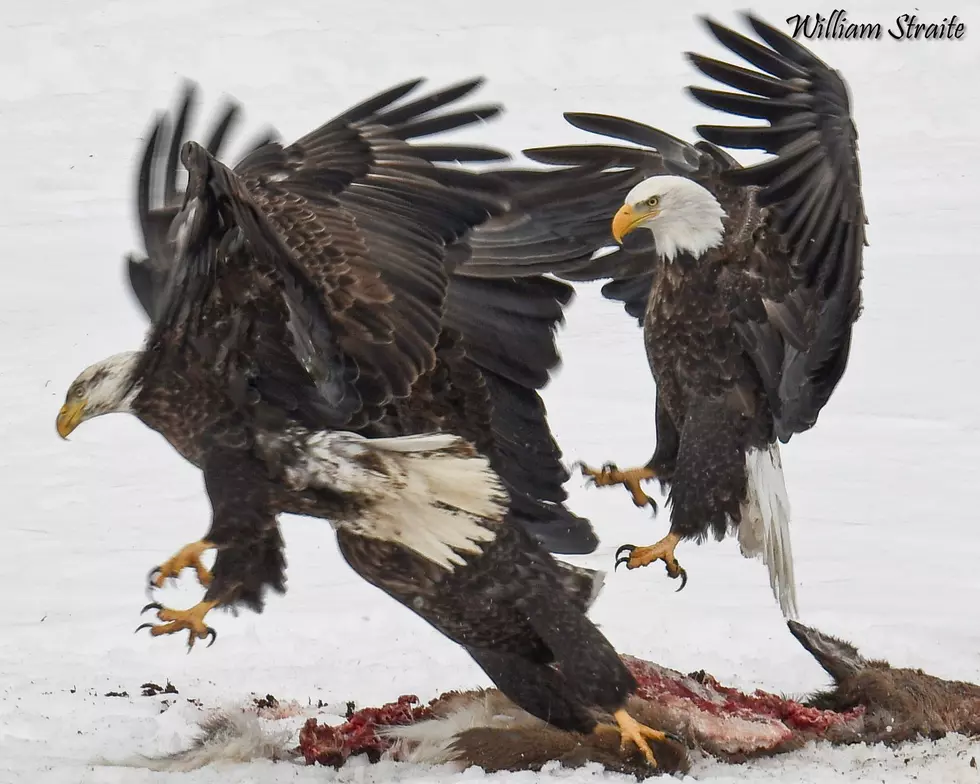
Where Did The Black River Eagles Go?
After seeing flocks of Eagles along the Black River for several weeks this winter, the numbers are starting to decline. So, where did they go? Our Wildlife Photographer and Eagle Guy, William Straite has the answer.
William says he spent twenty hours scouting for more photos of the feeding frenzies he has shared with us in the recent days. He's noticed a huge drop in the number of majestic birds congregating as they battle for road kill and any other food source they can find when fields are snow covered and lakes and rivers are frozen. It can mean only one thing.
They are definitely working on their nests and they should be laying eggs very shortly.
Eagles usually lay one to two eggs between mid March or April, which means mates are currently returning to their nest. They work on them year after year with many reaching dimensions of eight to nine feet in diameter and four to five feet deep. Some will even run well over one thousand pounds. Once the eggs are laid, one of the two mates will always be in the nest keeping them warmed to about 105 degrees and rolling them over every four to five hours. Eaglets usually hatch in about five to six weeks after they are laid. Unfortunately only about half the eggs will produce a bird that will live a normal life span.
This will be an important time to give Eagles plenty of room as any undue stress can cause the females to lose their eggs. The birds can also be more aggressive when nesting and laying eggs. There are federal laws protecting Eagles
Harassing, disturbing or injuring a bald eagle is a federal offense and carries a penalty of up to $20,000 and/or one year in jail. Remember that bald eagles should remain undisturbed, and it is important that they conserve energy during the winter months."
William did capture some more amazing pictures, of what he calls the "final feeding frenzy." Of particular note is the one of the lone hawk feeding on a carcass. He says all the Eagles let it eat first.
CNY Eagle Final Feeding Frenzy Winter 2021
Central New York Eagles Abandon Their Nest After People Got Too Close
Trying to get an up close picture of an Eagle with your cell phone or an inexpensive camera can be detrimental to the birds. Our wildlife photographer, William Straite says a couple of mates have abandoned their nest after people got to close.
Professional photographers like William know the lifestyles and habits of the wildlife they are trying to capture. They know to stay a safe distance during mating, nesting, and birthing times so the creatures aren't unduly stressed. They generally lay their eggs in March or April and hatch 35-37 days after they are laid. This time of year stressing the females can cause them to loose their eggs.
Cell phones and inexpensive cameras can't get close enough to take quality shots like the pros, who use lenses alone that are valued at thousands of dollars. Plus true photographers spend hours motionlessly waiting to capture the perfect shot.
If you want to experience something pretty amazing, use binoculars, stay back, enjoy, and don't chase them from their homes.
Eagles Nest in Hueston Woods State Park in Ohio.
Getting to close to Eagles can be dangerous for individuals too. The birds can be aggressive especially in winter when food is scarce. William shared three closeups of the famed Mr. Peeples at Cohoes Falls. Notice in picture 3 he's leaning forward, William says he ducked just in time.
Mr Peeples at Cohoes Falls
Eagles Aren't Born With White Heads
More From Big Frog 104
